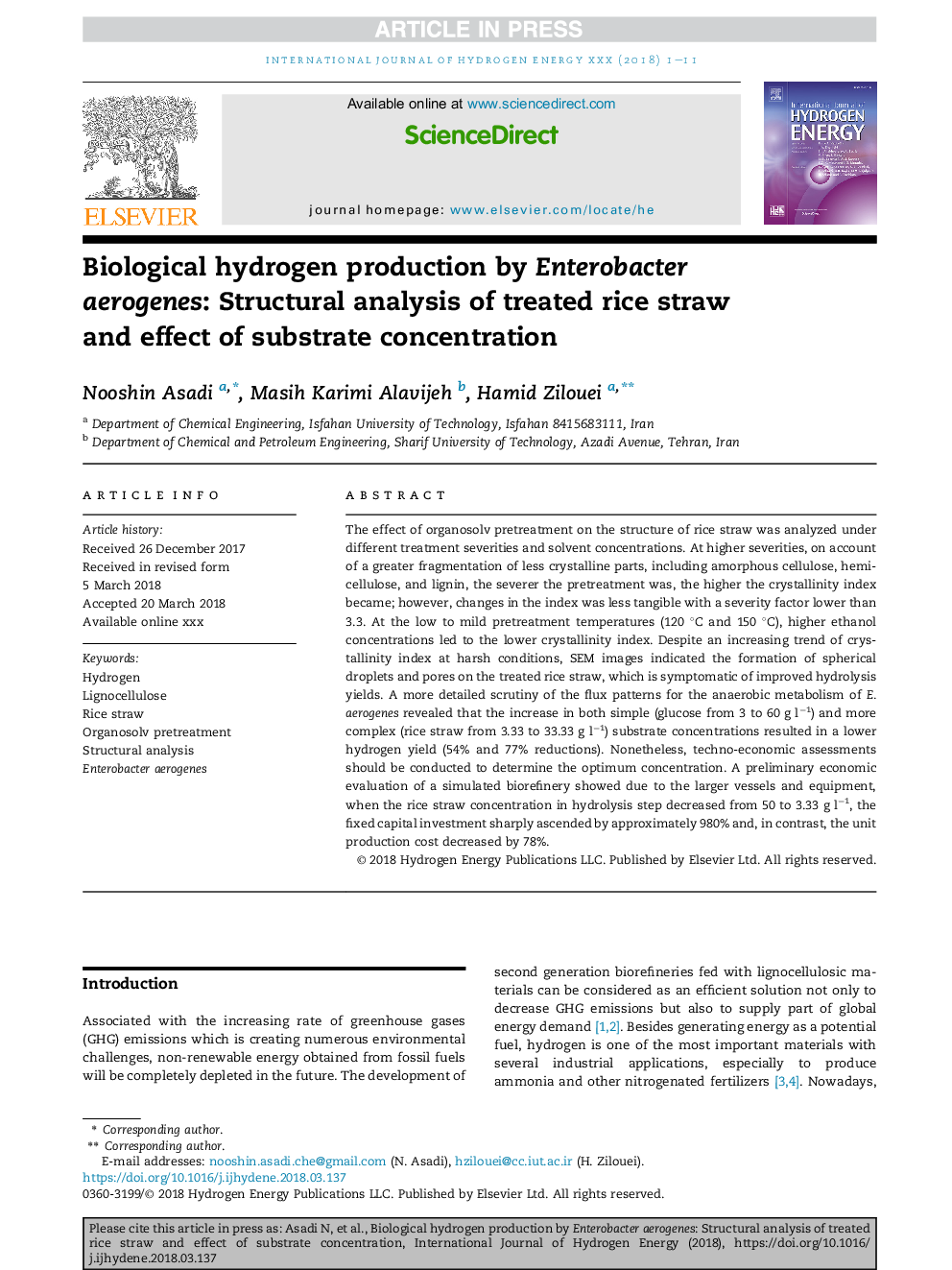| Article ID | Journal | Published Year | Pages | File Type |
|---|---|---|---|---|
| 7706200 | International Journal of Hydrogen Energy | 2018 | 11 Pages |
Abstract
The effect of organosolv pretreatment on the structure of rice straw was analyzed under different treatment severities and solvent concentrations. At higher severities, on account of a greater fragmentation of less crystalline parts, including amorphous cellulose, hemicellulose, and lignin, the severer the pretreatment was, the higher the crystallinity index became; however, changes in the index was less tangible with a severity factor lower than 3.3. At the low to mild pretreatment temperatures (120 °C and 150 °C), higher ethanol concentrations led to the lower crystallinity index. Despite an increasing trend of crystallinity index at harsh conditions, SEM images indicated the formation of spherical droplets and pores on the treated rice straw, which is symptomatic of improved hydrolysis yields. A more detailed scrutiny of the flux patterns for the anaerobic metabolism of E. aerogenes revealed that the increase in both simple (glucose from 3 to 60 g lâ1) and more complex (rice straw from 3.33 to 33.33 g lâ1) substrate concentrations resulted in a lower hydrogen yield (54% and 77% reductions). Nonetheless, techno-economic assessments should be conducted to determine the optimum concentration. A preliminary economic evaluation of a simulated biorefinery showed due to the larger vessels and equipment, when the rice straw concentration in hydrolysis step decreased from 50 to 3.33 g lâ1, the fixed capital investment sharply ascended by approximately 980% and, in contrast, the unit production cost decreased by 78%.
Keywords
Related Topics
Physical Sciences and Engineering
Chemistry
Electrochemistry
Authors
Nooshin Asadi, Masih Karimi Alavijeh, Hamid Zilouei,
